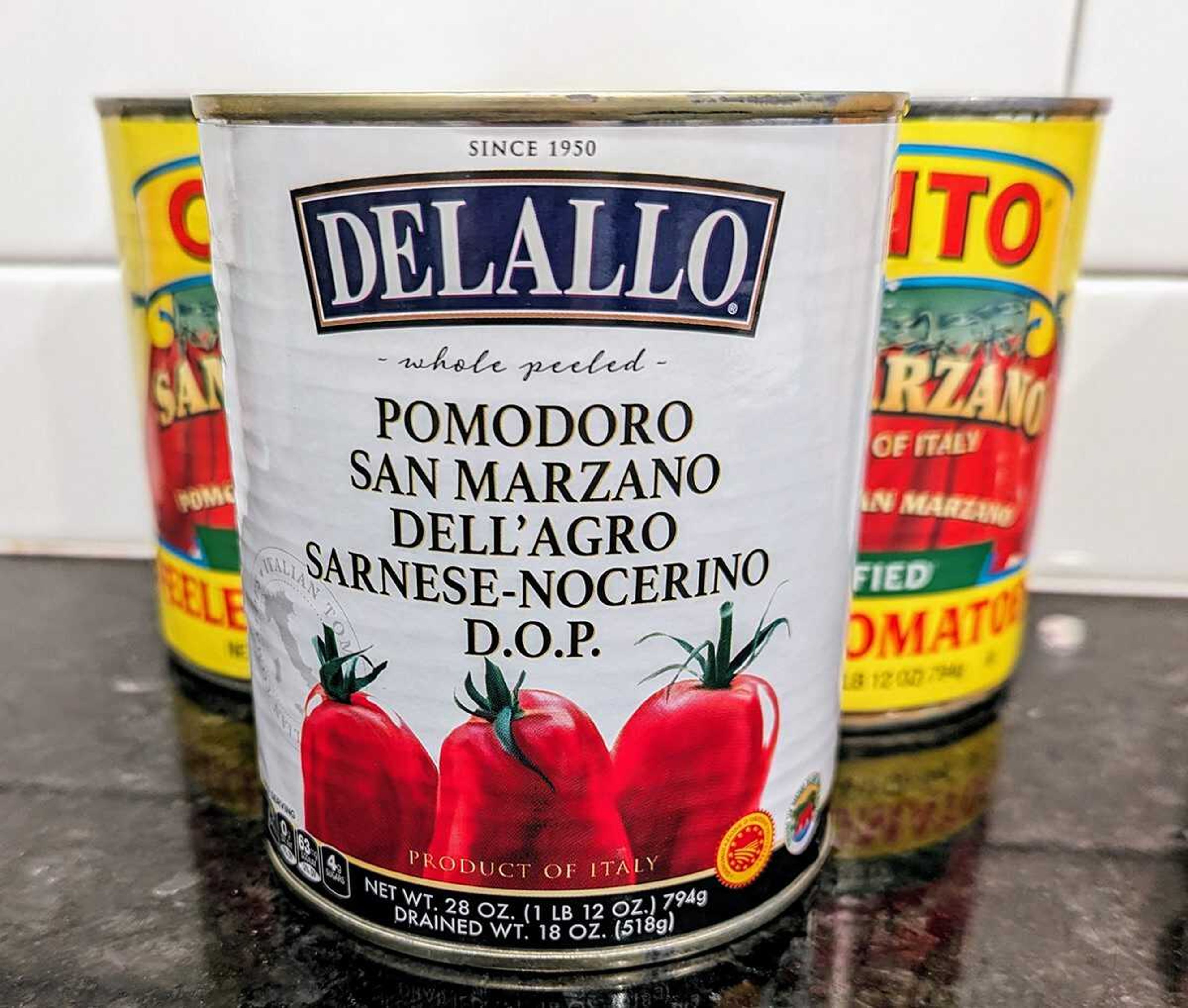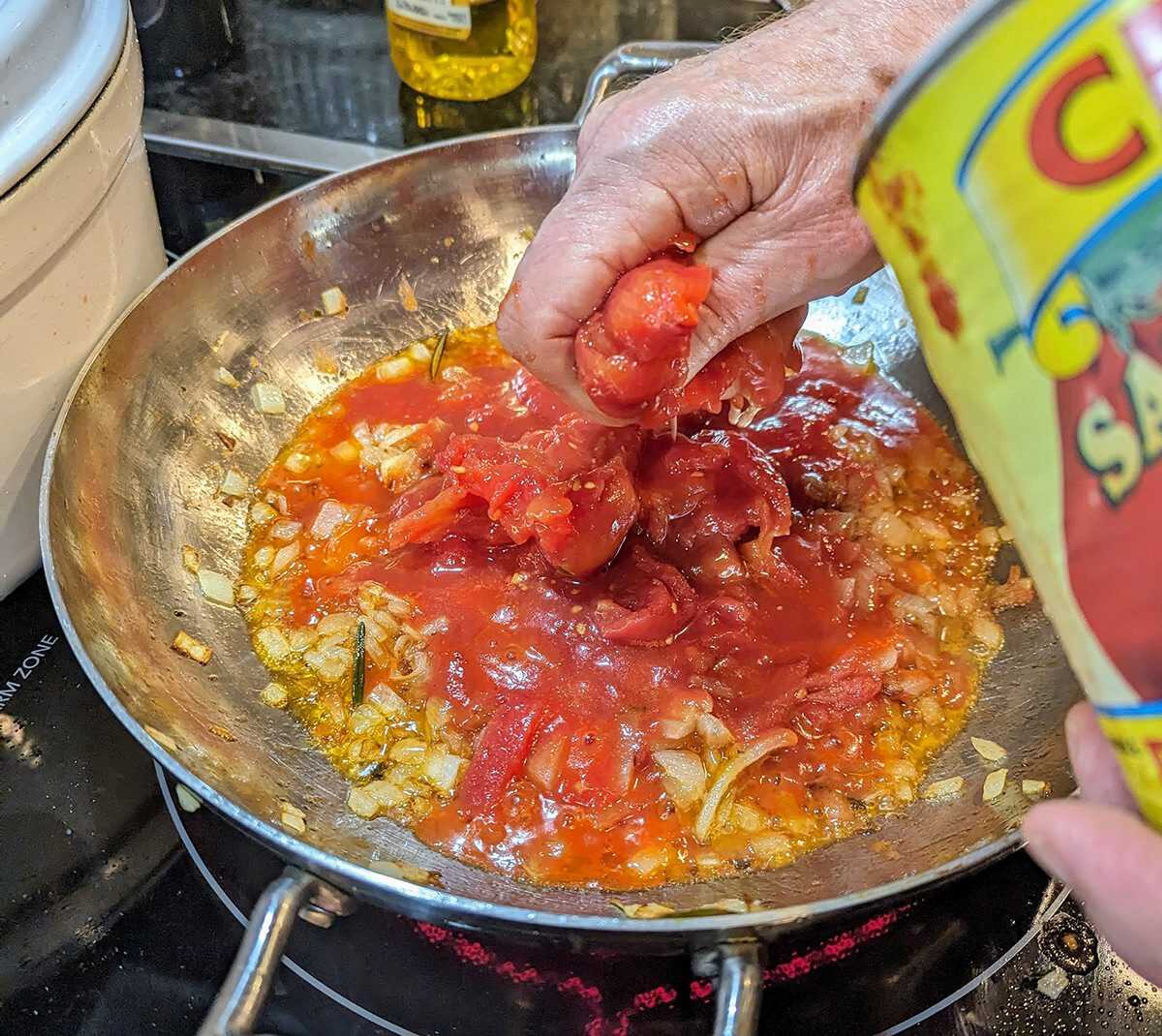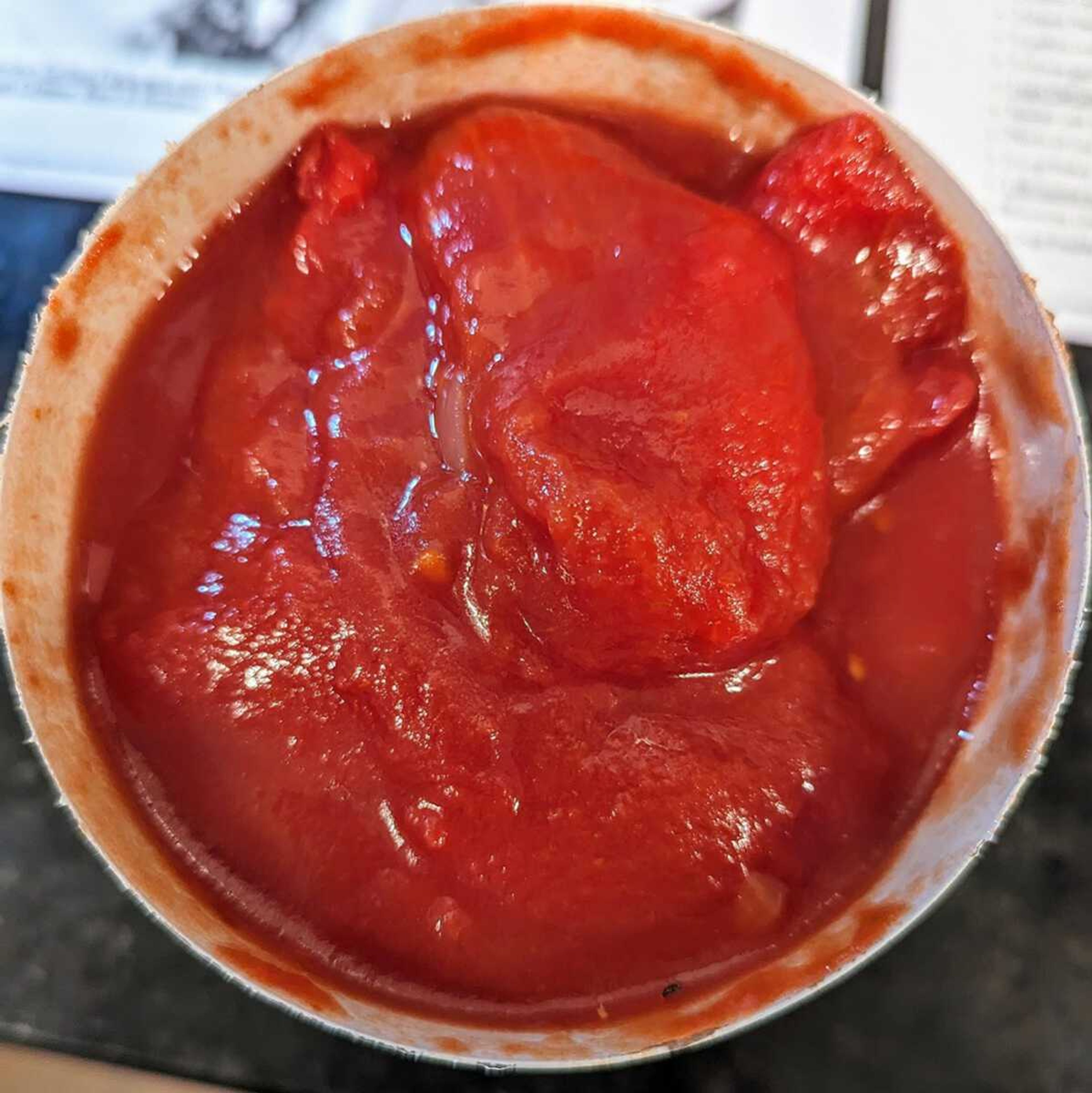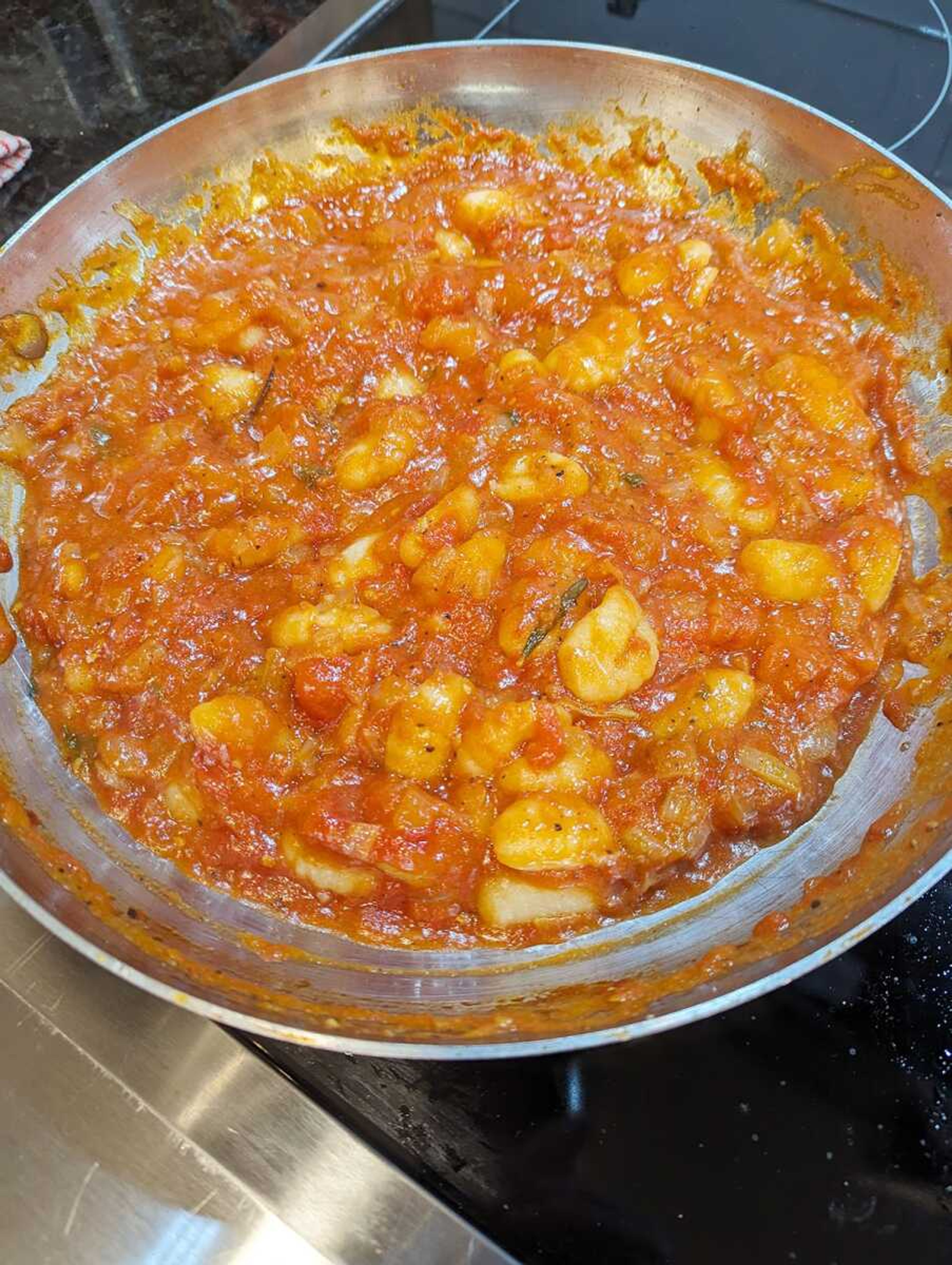Years ago, when I first visited the city of Pompeii, famously preserved in volcanic ash in 79 B.C. by the eruption of nearby Mount Vesuvius, I could not help but be impressed by two things: the sophistication of the ancient Roman city which had been frozen in time and the power of the forces which took only 15 minutes to overwhelm it.
On subsequent visits I have learned that there is at least one other noteworthy feature of Pompeii's location. Thanks to Vesuvius, it sits in an area of southern Italy blessed with rich volcanic soil that arguably makes for the best tomato in the world -- the Pomodoro di San Marzano, which derives its name from the city of San Marzano sul Sarno, one of 41 towns within the adjoining agricultural region.
Though you can find fresh San Marzano tomatoes in Italy, you're not likely to find them here in this country. So you'll have to settle for the canned variety. But it turns out that "settling" for canned tomatoes is hardly a compromise, especially when it comes to San Marzanos.
A common misperception is that canned ingredients are invariably inferior to fresh ones. They often are. Consider, for example, canned green beans, or spinach or peaches, or, if you're not British, peas. (In the UK mushy peas are still a thing.)
But when it comes to tomatoes, it's fortunately a different story, because this time of year good fresh tomatoes, like good hide-and-seek players, are hard to find. Happily, canned tomatoes are actually preferable. In winter the grocery produce aisle offers tomatoes that have typically been grown in a greenhouse, picked before they are mature and sometimes artificially ripened, shipped over long distances, taking as long as a couple of weeks to reach you, and bred more for their keeping ability than their flavor. In this case, a canned tomato is not merely as good as fresh, it's better.

In fact, even when fresh tomatoes are available, after the Fourth of July and in August, canned tomatoes are often superior to what you might find at a grocer anyway, particularly when you're going to use them for cooking. That's because they have been picked at their peak and canned in a matter of hours. Effectively, they're always in season.
Unless you're preparing a Caprese salad or a BLT, for cooking you're better off with canned tomatoes, a principle you may have already discovered if you've ever tried to make a tomato sauce with fresh tomatoes and ended up with something watery. For soups, sauces, stews, shakshuka, salsa and the like, canned tomatoes are the better choice. The juice from them makes a pretty good bloody mary too.
This postulate is no more true than when your choice is San Marzano canned tomatoes, the quality of which, like Parmesan cheese, balsamic vinegar and prosciutto, is proudly regulated by the Italian government. (Look for the D.O.P. certification on the label.)
Truly, San Marzano is the Cadillac (or should I say Lamborghini?) of canned tomatoes.

Gnocchi With Pomodoro Sauce
Pomodoro is the Italian word for tomato, from pomo d'oro or "golden apple" which originally referred to the yellow tomatoes first imported to Italy. This recipe for the classic sauce, paired with gnocchi rather than spaghetti, is adapted from delallo.com, the website of an Italian foods specialty shop established near Pittsburg over half a century ago by the DeLallo family.

- 1/4 cup olive oil
- 4 stems Italian flat leaf parsley
- 2 sprigs rosemary
- 2 stems basil
- 1/2 onion, diced
- 3 cloves garlic, minced
- 1 can (28 ounces) San Marzano tomatoes
- Pinch red pepper flakes
- 1/4 cup cream
- 16 ounce package gnocchi
- 8 ounces bocconcini (small mozzarella balls)
- 1/4 cup Parmesan cheese
Saute parsley, oregano, rosemary and basil in olive oil until crisp. Remove, discard and add onion and garlic, cooking until onions are translucent. Crush the tomatoes and add with their juice to pan along with salt and pepper to taste and pepper flakes. Cook, stirring occasionally, until sauce thickens, 30-40 minutes. Stir in cream. Add gnocchi and cook until done, 5-7 minutes. Dot with bocconcini, sprinkle with Parmesan, drizzle with more olive oil and broil until cheese melts.
Tom Harte's book, "Stirring Words," is available through KRCU, 90.9 FM where "A Harte Appetite" airs Tuesdays at 7:42 a.m. and 5:18 pm. Call 651-5070. Contact Tom at semissourian.com or at the Southeast Missourian, P.O. Box 699, Cape Girardeau, Mo., 63702-0699.
Connect with the Southeast Missourian Newsroom:
For corrections to this story or other insights for the editor, click here. To submit a letter to the editor, click here. To learn about the Southeast Missourian’s AI Policy, click here.











